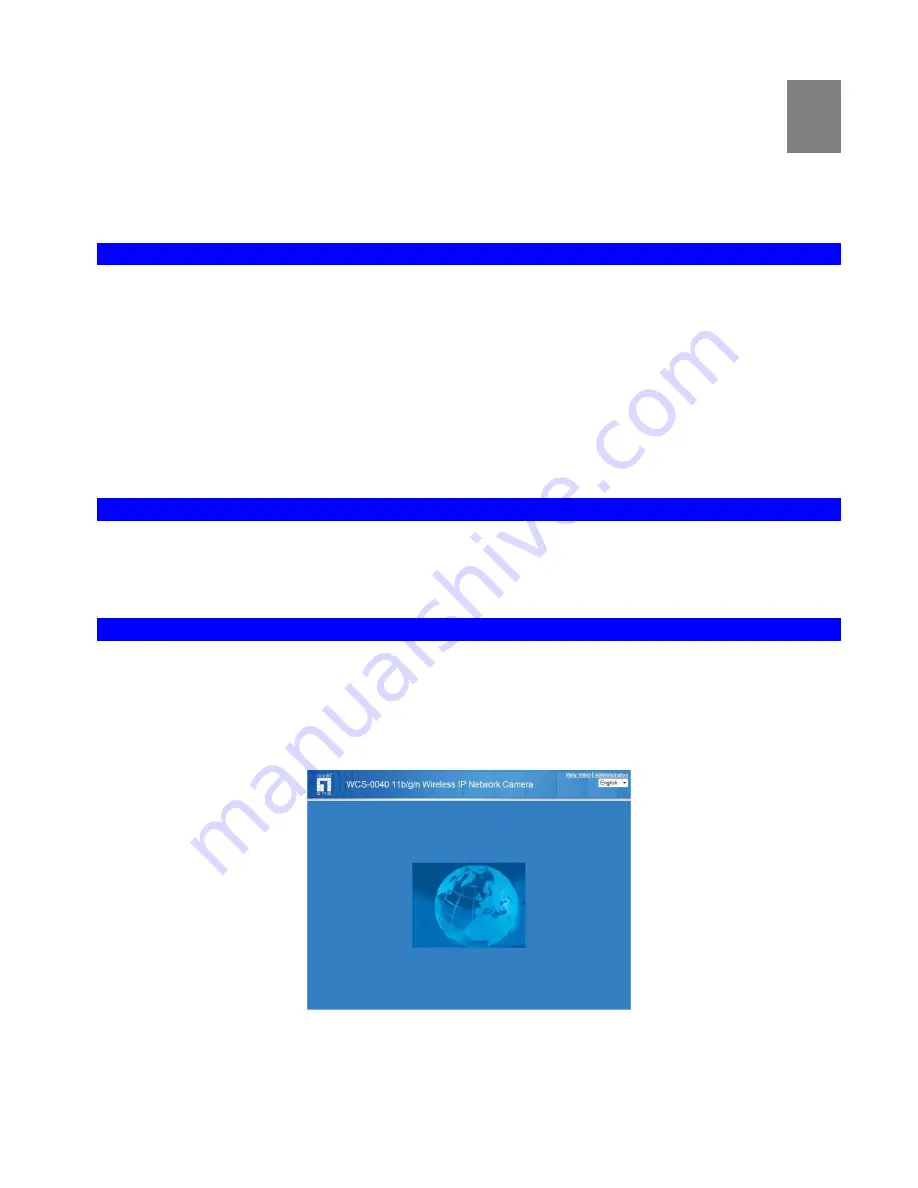
11
Chapter 3
Chapter 3
Chapter 3
Chapter 3
Viewing Live Video
Viewing Live Video
Viewing Live Video
Viewing Live Video
This Chapter provides basic information about viewing live video.
Overview
After finishing setup via the Windows-based Wizard, all LAN users can view live video using Internet Explorer on Windows.
This Chapter has details of viewing live video using Internet Explorer.
But many other powerful features and options are available:
•
To view multiple cameras simultaneously, or record video (either interactively or by schedule), you should install the
Windows Viewing/Recording utility. Refer to Chapter 6 - Windows Viewing/Recording Utility for details on installing and
using this program.
•
The camera administrator can also adjust the Video Stream, and restrict access to the video stream to known users by
requiring viewers to supply a username and password. See Chapter 4 - Advanced Viewing Setup for details.
•
To make Live Video from the camera available via the Internet, your Internet Gateway or Router must be configured correctly.
See Making Video available from the Internet in Chapter 4 - Advanced Viewing Setup for details.
Requirements
To view the live video stream generated by the FCS-0040/WCS-0040, you need to meet the following requirements:
•
Windows XP, 32-bit Windows Vista/Windows 7.
•
Internet Explorer 6 or later, Firefox 3.0 or later.
Connecting to a Camera on your LAN
To establish a connection from your PC to the FCS-0040/WCS-0040:
1.
Use the Windows utility to get the IP address of the FCS-0040/WCS-0040.
2.
Start Internet Explorer.
3.
In the Address box, enter "HTTP://" and the IP Address of the FCS-0040/WCS-0040.
4.
When you connect, the following screen will be displayed.
5.
Click View Video.
6.
If the Administrator has restricted access to known users, you will then be prompted for a username and password.
Enter the name and password assigned to you by the FCS-0040/WCS-0040 administrator.
7.
The first time you connect to the camera, you will be prompted to install an ActiveX component (OCX or CAB file), as in the
example below.
3
3
3
3





























